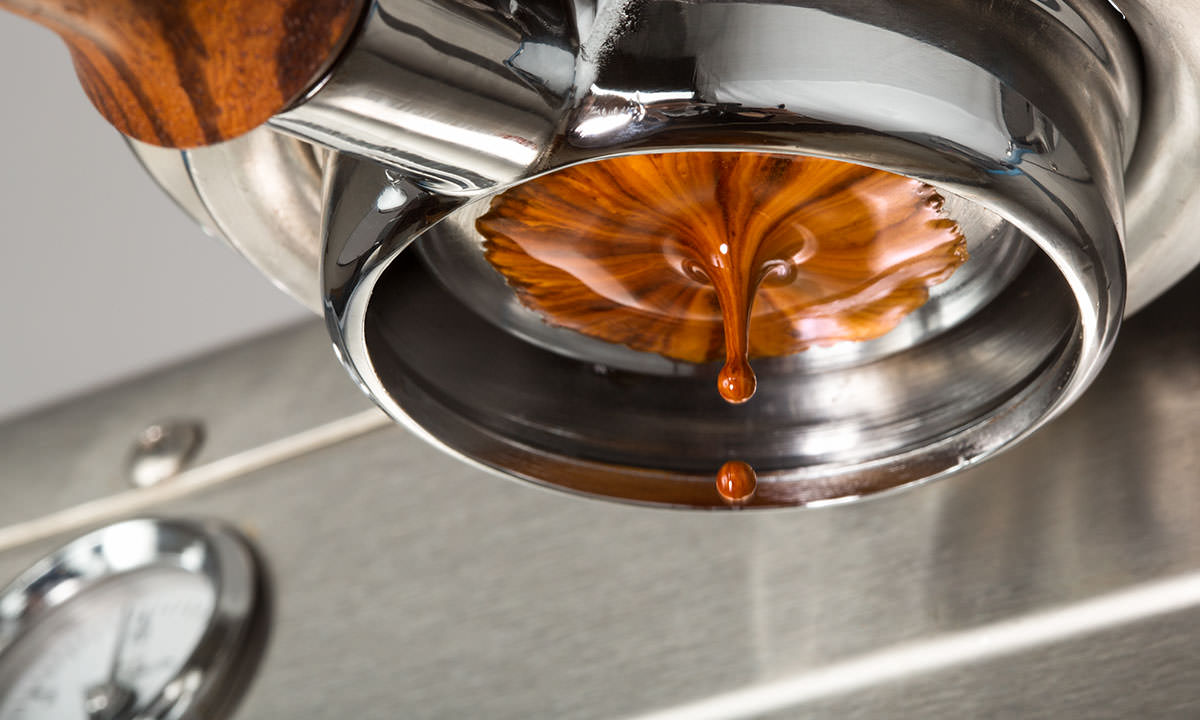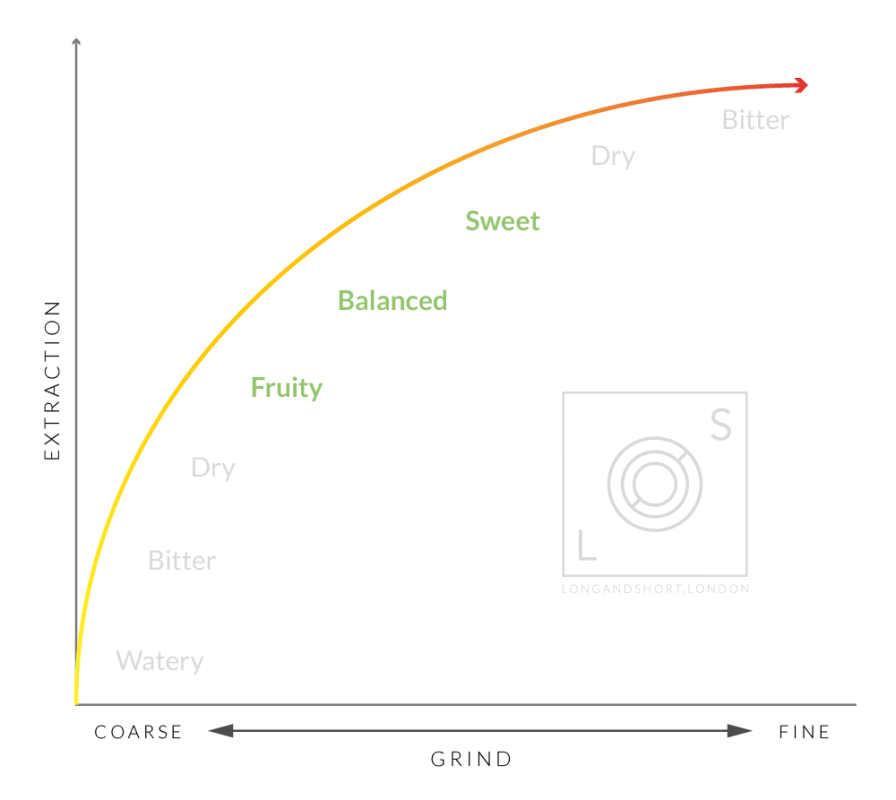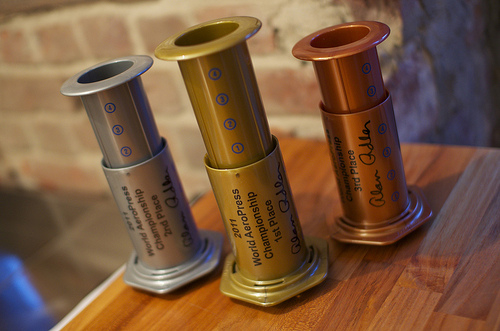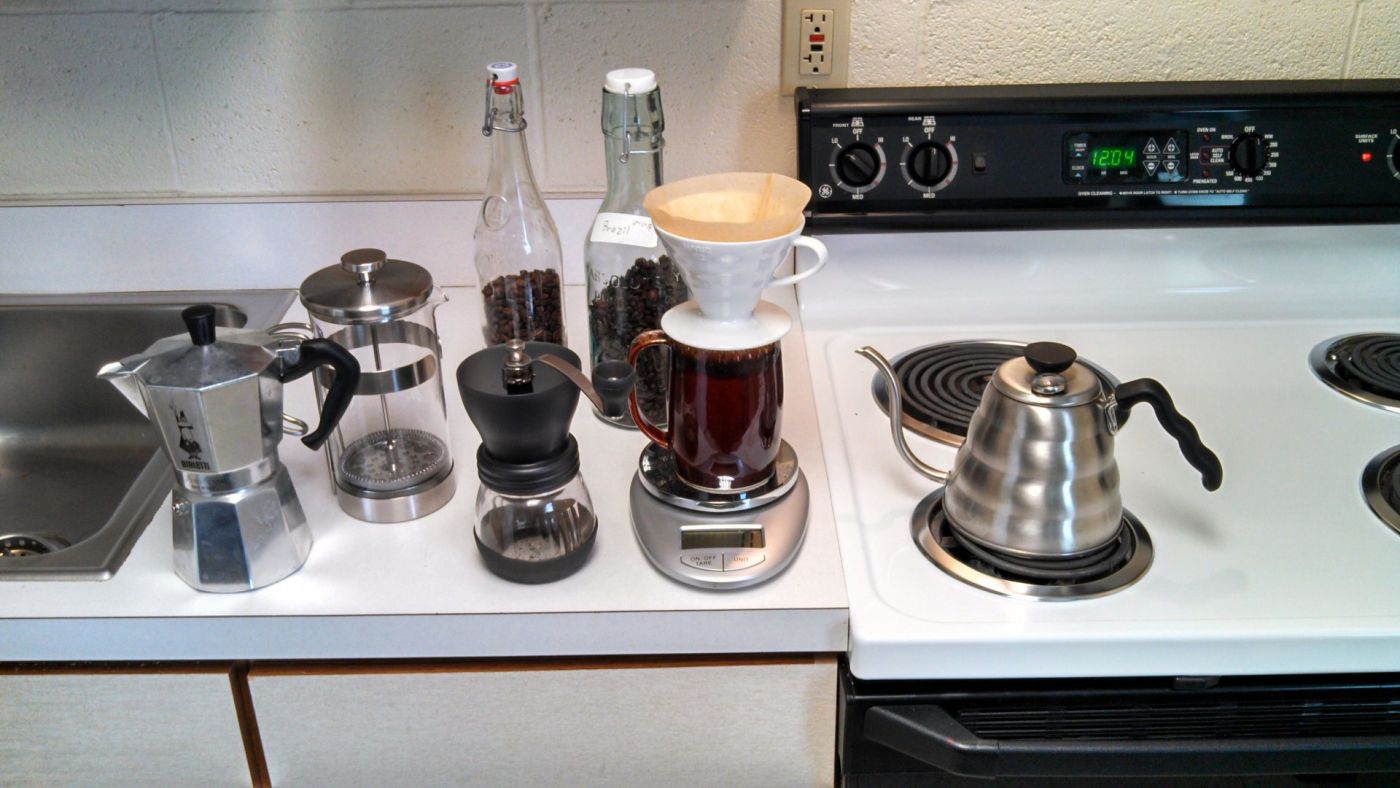Although there are many guides available across the interwebs with very specific and individualised recipes for the different methods available to make your morning brew, we thought it would be a good idea to go behind the scenes in order to help you understand what the various settings really mean for your cup, and how you can adjust them yourself regardless of which brew method you use, in order to make the perfect cup of coffee.
Cogito ergo sum
That means ‘I think, therefore I am’ and although Latin is a dead language and I’m being a complete w&n*e£, the phrase is just about relevant because everything we do to approach the ‘perfect’ coffee is entirely subjective and relative, no matter how much science we throw at it.
One man’s ‘sour’ is another man’s ‘fruity’. One man’s ‘strong’ is another man’s ‘bitter’. One man’s espresso is another man’s sink shot. You get the picture.
There is no right and wrong, so we need to understand how the coffee affects our own brain, and how to adjust it based on that feedback.
A quick 101 on extraction
The basis of all coffee making is the science of extraction*. The process is effectively a mini chemistry experiment, and all of the variables combine to define how much of the coffee bean ends up in the cup and results in 3 basic outcomes:
- Under extracted: thin body, ‘weak’ taste, dry mouthfeel
- Well extracted: medium (good) body, ‘non-bitter’ taste (delicious)
- Over extracted: heavy body, ‘strong’ taste but bitter
Obviously, with every combination in the cup, the ultimate aim is to get to number 2: a good extraction that tastes well balanced, not bitter, not dry. Just. Right.
*Often, extraction is quoted as TDS or ‘Total Dissolved Solids’; the higher the number, the greater the extraction. Mostly, you can ignore this and stick to using your own senses to judge. (Plus, the equipment used to measure this stuff is mega-geek-costs-a-fortune territory.) We’ll ignore using these numbers so we can to stick to the fundamental theories in this article.

The 4 cardinal truths behind the perfect cup of coffee
Beyond the bean’s own heritage, freshness and quality etc, these bad boys are the variables that will directly impact your cup at brew time:
- Roast level
- Grind size
- Dose
- Temperature
You’re probably well familiar with them to some degree already, but how exactly do they go on to impact what your cup tastes like?

Roast level
A lot of the time, you won’t have any control over this variable, although luckily, you’re able to specify two different degrees of roast-level when ordering our coffees. Shameless plug over.
The roast level, from light through to dark will mostly decide how much acidity, sweetness and body the coffee will have. This is a topic that can turn into a real rabbit hole so I won’t go into too much detail here, but as long as the roast has provided suitable roast development of the inner bean, these are the key things to be aware of:
Lighter roasts will tend to have higher acidity with less body. Sweetness will tend to be less than a medium roast, but if developed well, it can have well balanced acidity and sweetness. This roast will boost any fruit, citrus and tea notes in the coffee. These types of roasts are usually attributed to roasting styles originating in Scandinavia and are often named ‘Nordic Roast’.
Medium roasts will tend to have less acidity than light roasts, with more body and sweetness. The coffee will usually be considered more ’round’, which is a coffee snob way of saying ‘smooth’. Like with most things medium, this is really the level that most enjoy their coffee and will bring out flavour notes in a balanced manner across the board, if roasted correctly. This is also really the only option for coffee with low acidity.
Dark roasts tend to be shunned by the third-wave of coffee. Why? Because it is used to hide defective, or old/stale coffee. The dark roast masks any of the origin flavours, instead imparting only roasting characteristics in the cup. That is, the origin flavours are overwhelmed and masked by the extended use of the roaster. Notes can include smoke, bitterness, spice — all of these are usually present in this cup. Possibly, but arguably not the perfect cup of coffee.

But L&S – why do you guys also specify Filter or Espresso with your roast levels?
Due to the stuff I said earlier about extraction, this is quite simple to explain: filter coffee and espresso extractions are rather different, with espresso having a far higher degree of extraction due to the water pressure placed on the coffee through the machine. Ultimately, the roast level is increased slightly to avoid extremely high levels of acidity to be introduced into the espresso shot, which can sometimes be defined as ‘sour’ or a ‘citrus/lemon bomb’ etc.
Obviously, beauty is in the eye of the beholder, and if you want to order a ‘Filter’ or light roast and run it through your espresso machine because that’s the flavour profile you love, then why the hell not? I love good quality expressive acidity in a coffee, so this often works for me too.
Grind size
We’ve spoken about the impact of grind size previously and also provided an overview of good value grinders on the market, but for completeness, I’ll cover the basics again here.
Grind size is the fundamental way of altering your brew.
Finer: higher extraction, more sweetness (or more bitterness if you go too far), more body, less acidity/fruit (sourness)
Coarser: less extraction, less sweetness (and less bitterness), less body, more acidity/fruit (sourness if you go too far)

Dose
Increasing your dose will increase overall perceived strength or intensity of the coffee flavour, although technically, the extraction is decreased. It will also increase the body.
The main reason for doing this is if you find a level of acidity or sweetness that you want, but simply want to increase the intensity/strength without making it sour or bitter.
Often this is ill-advised in the cafe environment to maintain consistency and speed throughout the day, but at home you can play to your heart’s content, and adjusting dosage is a great way of fine-tuning your latest batch. Nailed your grind but want more flavour intensity and/or body? Up your dose a notch.
Temperature
And finally (phew) is the temperature of the water you’re heating.
Hotter water — as usual, due to its increased solvency — will lead to higher extraction. Too hot and the water will scald the coffee; some argue this starts at 92 degrees celcius (198F) and some argue it’s higher, but as with all of these variables, it’s worth playing with.
The Aeropress championships have seen winning temperatures as low as 75C, so it’s certainly worth experimenting in a broad range, from 75C up to at least 92C.

Et al
He can’t help himself can he? Other considerations for the perfect cup of coffee include:
- Water quality: use high quality, filtered water — Brita as a minimum, reverse-osmosis if you can be bothered, Volvic if you prefer bottled
- Agitation: more agitation (stirring, shaking) that’s used as part of the brewing technique equals more body, but clarity is reduced and flavours will be more muddled. Be mindful of the kind of coffee notes you’re aiming for; a delicate African fruity coffee will probably beg for less agitation, for example, in order to maintain clear traces of the fruit notes that have been identified.
- Altitude: the higher you go, the more blunted your senses (apart from Umami)
- Time of day: contaminated senses from other food consumption; olfactory fatigue (knackered sense of smell)
- The list could probably go on forever so we’ll stop here for now.
I’ll try and keep this updated as I think of other weird and wonderful things can affect your daily brew, but in the meantime, take care of yourself, and each other. (And have fun experimenting.) 🙂




Pingback: Resting coffee: how long should you leave it? | Long & Short Coffee
Pingback: The best way to store roasted coffee | Long and Short Coffee Roastery